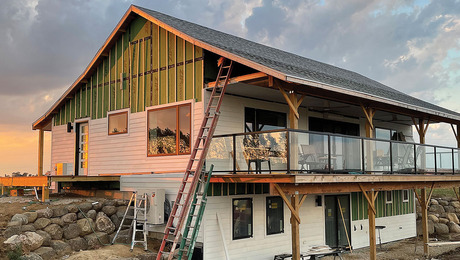Is it really against the code to locate a doorbell transformer in the attic? If so, why?
New knowledge is priceless.
Used knowledge is even more valuable.
Is it really against the code to locate a doorbell transformer in the attic? If so, why?
New knowledge is priceless.
Used knowledge is even more valuable.

Understand the difference between estimating and cost planning, and don't let your sweat equity evaporate into budgeting mistakes.

"I have learned so much thanks to the searchable articles on the FHB website. I can confidently say that I expect to be a life-long subscriber." - M.K.
Get home building tips, offers, and expert advice in your inbox
Fine Homebuilding
Get home building tips, offers, and expert advice in your inbox
© 2024 Active Interest Media. All rights reserved.
Get home building tips, offers, and expert advice in your inbox
Become a member and get instant access to thousands of videos, how-tos, tool reviews, and design features.
Start Your Free TrialGet complete site access to expert advice, how-to videos, Code Check, and more, plus the print magazine.
Already a member? Log in
Replies
I don't *think* so. But really not sure.
AFAIK the the ownly requirement is that it be acessible.
.
A-holes. Hey every group has to have one. And I have been elected to be the one. I should make that my tagline.
The paperwork that it came with states that it may not be located in the attic. I've since learned that it has something to do with a thermal fuse inside the transformer that has a very low threshhold. I know that the high and low voltage wires can't share the same box, but I'd never heard of it being against code to mount the unit in an attic before.
I think I'm going to back it up to a shallow box and mount it directly behind the chimes. I can't find any code that would prohibit that since the high voltage wires will remain accessible.New knowledge is priceless.
Used knowledge is even more valuable.
The transformer contains a thermal fuse that will "burn out" the transformer if it overheats (eg, because the secondary leads are shorted for more than a few seconds). Just guessing, but the fuse probably lets go around 200F. Since attics can get in the 180F neighborhood that doesn't leave much margin.
It is an ironic habit of human beings to run faster when we have lost our way. --Rollo May
Not to mention that Sparkies don't like to get dirty.
See NEC art. 110.3(B) which requires that listed or labled equipment be installed per manuf. instructions
I was just going to say that, but this fella beat me to it. Why do you want it in the attic anyways? Is the doorbell going into the attic as well?
"Why do you want it in the attic anyways? Is the doorbell going into the attic as well?"
No. That's where I found it when I started remodeling. It's old and not functioning, so I'm replacing it. The cabling is aleady in place for a simple exchange, but I wanted to make sure that everything is up to code. I discovered that this isn't.New knowledge is priceless.
Used knowledge is even more valuable.
Just relocate the box and use the existing wires. I'd put it below in the wall below where it is now.
That's what I ended up doing. I just wondered why the attic location was a code issue. Sometimes I have to know "why". It's a hard habit to break.New knowledge is priceless.
Used knowledge is even more valuable.
For some reason the most common location I have seen for the DB transformer is the coat closet closest to the front door, and surface mounted on a round box blank metal cover plate.
Edited 7/20/2008 2:40 pm by kenhill3
FWIW I'm no low voltage engineer. To step the voltage down it produces heat. The only way to stop overload is through heat protection. Attic is probably too hot.
I had a transformer catch fire because the overload protection didn't work, and a dead short on 12v won't trip a 20 amp breaker.
Which means when it is in the box behind the chimes, no dissipation of the heat is possible...
Most that I've seen are on or in the box feeding the furnace.